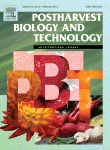Ver ítem
- xmlui.general.dspace_homeCentros Regionales y EEAsCentro Regional Entre RíosEEA ConcordiaArtículos científicosxmlui.ArtifactBrowser.ItemViewer.trail
- Inicio
- Centros Regionales y EEAs
- Centro Regional Entre Ríos
- EEA Concordia
- Artículos científicos
- Ver ítem
Proteomic, metabalomic, and biochemical analysis of heat treated Valencia oranges during storage
Resumen
Heat treatment induces defense mechanisms and triggers physiological responses that allow citrus fruit to withstand stressful conditions during storage. The aim of this paper was to identify changes in the proteome and the biochemistry of Valencia oranges (Citrus sinensis cv Valencia late) subjected to heat treatment before 0, 30 and 60 d of storage at 5 °C. Heat treatment for 48 h at 37 °C and 90% relative humidity was followed by 24 h at 20 °C.
[ver mas...]
Heat treatment induces defense mechanisms and triggers physiological responses that allow citrus fruit to withstand stressful conditions during storage. The aim of this paper was to identify changes in the proteome and the biochemistry of Valencia oranges (Citrus sinensis cv Valencia late) subjected to heat treatment before 0, 30 and 60 d of storage at 5 °C. Heat treatment for 48 h at 37 °C and 90% relative humidity was followed by 24 h at 20 °C. Differentially expressed proteins were detected by two-dimensional differential gel electrophoresis and identified by matrix-assisted laser desorption/ionization MS. Twenty eight different proteins in 40 spots among the 61 analyzed were identified. Functional classification showed that the main affected categories were “Cell rescue, defense, and virulence” and “Metabolism”; while 20% were found to be storage proteins with the rest related to minor categories. Activity of antioxidant enzymes was also evaluated. The most conspicuous change was an increase in superoxide dismutase in both the flavedo and juice sacs. Peroxidases increased in flavedo but decreased in sacs while alcohol dehydrogenase increased in treated flavedo, but not in sacs. Other fermentative enzymes were not affected. Metabolite content showed a higher concentration of sugars in heat treated fruit, while the main acids were slightly or not affected. These results are consistent with the development of a lower degree of fruit susceptibility to fungal pathogens, thus explaining the maintenance of postharvest quality.
[Cerrar]

Autor
Perotti, Valeria Elisa;
del Vecchio, Hernán A.;
Sansevich, Alina;
Meier, Guillermo Enrique;
Bello, Fernando;
Cocco, Mariángeles;
Garran, Sergio Mario;
Anderson, Catalina Margarita;
Vazquez, Daniel Eduardo;
Podesta, Florencio Esteban;
Fuente
Postharvest Biology and Technology 62 (2) : 97-114 (November 2011)
Fecha
2011-11
Editorial
Elsevier
ISSN
0925-5214
Formato
pdf
Tipo de documento
artículo
Palabras Claves
Derechos de acceso
Restringido
 Excepto donde se diga explicitamente, este item se publica bajo la siguiente descripción: Creative Commons Attribution-NonCommercial-ShareAlike 2.5 Unported (CC BY-NC-SA 2.5)
Excepto donde se diga explicitamente, este item se publica bajo la siguiente descripción: Creative Commons Attribution-NonCommercial-ShareAlike 2.5 Unported (CC BY-NC-SA 2.5)

